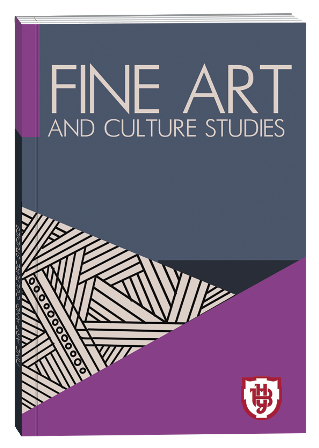ANALYSING THE WORLD OF ART BY MEANS OF ARTISTIC EXPRESSION. THE EXPERIENCE OF THE «INSTITUTIONAL CRITIQUE» MOVEMENT
DOI:
https://doi.org/10.32782/facs-2024-2-14Keywords:
art world, art space, museum, gallery, conceptual art, institutional critique.Abstract
The purpose of the article is to point out the peculiarities of the artistic movement of «institutional critique», as well as to establish the main features of the work of artists who worked in this direction. The phrase «institutional critique» is used as a general term for the movement of artists who analyse the work of museums, galleries and other institutions in their works in order to study and highlight the internal mechanisms of the art world, curating and exhibition activities. Art historians have identified two main waves or generations of «institutional critique» that emerged in Western Europe and the United States. The first one dates back to the 1960s and 1970s. It focused on museums and galleries as institutions. The second wave started in the second half of the 1980s and onwards. The focus of its criticism and research was not only the institution of the museum or gallery as such, but also a number of other institutions, from political to financial, and finally, the artist as an «institution» when he or she works within the museum or gallery. The novelty of the study is related to the fact that contemporary Ukrainian art is still in the process of institutionalisation. The understanding of what art institutions are for artists, the problems of coexistence between art markets, art institutions, curators, art managers, directors of art galleries and museums, and artists remain and will remain relevant for a long time. Methodologically, the author relied on the works of researchers and theorists in the field of «institutional critique» such as Benjamin Buchloh, Alexander Alberro, Fraser Ward, Hal Foster, Andrea Fraser and others. In conclusion, the author points out the need for a more thorough study of the work of representatives of the «institutional critique» movement and, in particular, the identification of Ukrainian artists who use the techniques and achievements of the artists of the first and second waves of «institutional critique» to work in the Ukrainian artistic environment.
References
Buchloh B. H. D. Conceptual Art 1962-1969: From the Aesthetic of Administration to the Critique of Institutions. October. 1990. Vol. 55. P. 105–143. URL:https://monoskop.org/images/7/7e/Buchloh_Benjamin_HD_1990_Conceptual_Art_19621969_From_the_Aesthetic_of_Administration_to_the_Critique_of_Institutions.pdf (Last accessed: 07.04.2024).
Ward F. The Haunted Museum: Institutional Critique and Publicity. October. 1995. Vol. 73. P. 71–89. URL:https://sci-hub.se/10.2307/779009 (Last accessed: 07.04.2024).
Fraser A. From the Critique of Institutions to an Institution of Critique. Artforum. 2005. Vol. 1. P. 100–106. URL:https://monoskop.org/images/b/b6/Fraser_Andrea_2005_From_the_Critique_of_Institutions_to_an_Institution_of_Critique.pdf (Last accessed: 07.04.2024).
Institutional Critique: An Anthology of Artists’ Writings / ed. Alberro A, Stimson B. Cambridge, Mass : MIT Press, 2009. 492 pp.
Art and Contemporary Critical Practice: Reinventing Institutional Critique / ed. Raunig G, Ray G. Stimson. London: MayFlyBooks, 2009. 266 pp.
Conceptual Art: A Critical Anthology / ed. Alberro A, Stimson B. Cambridge, Mass : MIT Press, 1999. 569 pp.
Hans Haacke, unfinished business / ed. Wallis B. The New Museum of Conlemporary Art. Cambridge, Mass : MIT Press, 1986. 288 pp.
Danto A. The Artworld. The Journal of Philosophy. 1961. Vol. 64. P. 571–584. URL:https://is.muni.cz/el/phil/jaro2014/IM088/Danto__1_.pdf (Last accessed: 07.04.2024).
O'Doherty B. Inside the White Cube: The Ideology of the Gallery Space. Santa Monica : Lapis Press, 1986. 91 pp.
Tomkins S. Marcel Duchamp the afternoon interviews / Calvin Tomkins. – New York. : Badlands Unlimited, 2013.95 pp







